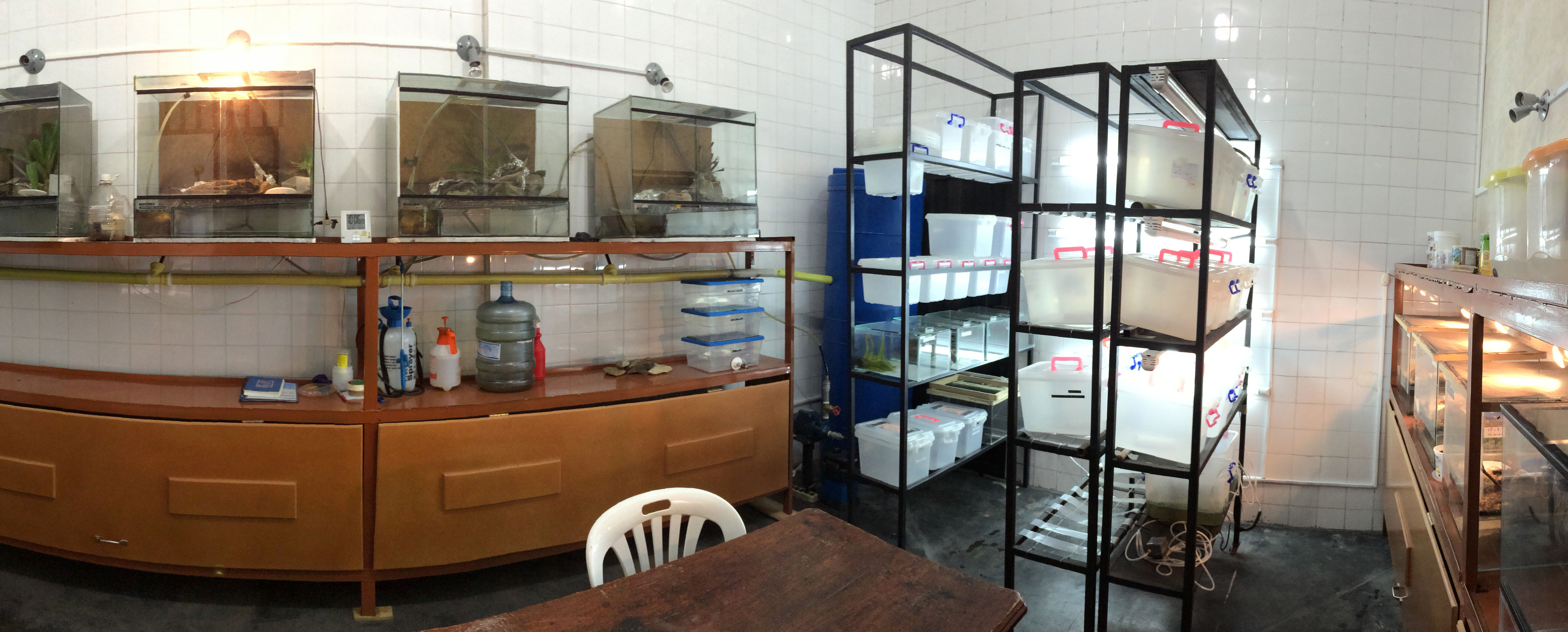Small pools filled with tadpoles were drying out at the periphery of a Venezuelan town. Our interest was to find specimens of a little amphibian of the genus Leptodactylus that we are calling the Merida’s whistling frog, although it is still an un-described species to science. Yes! It´s amazing that new species are even appearing in urban environments, but we have to remember that this city itself is immersed in one of the richest biodiversity spots on Earth: the Tropical Andes. A few months later we returned to the location to release the froglets metamorphosed in our lab. To our surprise, the entire place was now filled with precarious human settlements and all pools entirely vanished. Without knowing it, we rescued specimens that otherwise would not have had a chance of survival. We finally located a place for the liberation of the now grown-up specimens: a remnant of secondary seasonal forest with water springs close to a residential development. There, we found another frog that is also losing ground to the urban development: the Merida’s collared frog (Mannophryne collaris). To our dismay, a few months later we got the notice that the place was intended to house a sports field and a religious chapel. We joined an organized local group that was defending their “urban vegetable lung” from destruction. The couple of threatened frogs never heard off by the people were now a focus of attention, along with other more appealing animals and plants, to stop the forest destruction, what it finally happened.
Several lessons were drawn from the incident. There are still new data to gather on local amphibians, there are environmentally concerned groups that do no handle info on frogs but that could joint efforts to work with, and most important, we had two local frog species that were threatened by the urban development and that everyday are having less natural spaces to live in. We also know that several amphibians from nearby ecosystems are facing extinction risk. With all this in mind, we started a conservation project that finally ended in the creation of the Rescue of Endangered Venezuelan Amphibians (REVA) Conservation Center to attend not only this couple of threatened frogs, but also other species in need of conservation actions.
REVA is relying on three main conservation-related components: in situ, ex situ, and community empowerment. We think conservation should be addressed with a multi-factorial approach involving the threatened species, their environments and the local communities adding efforts with researchers and other knowledgeable people to attend the biodiversity crisis.
By Enrique La Marca, REVA (Rescue of Endangered Venezuelan Amphib-ians) Conservation Center

